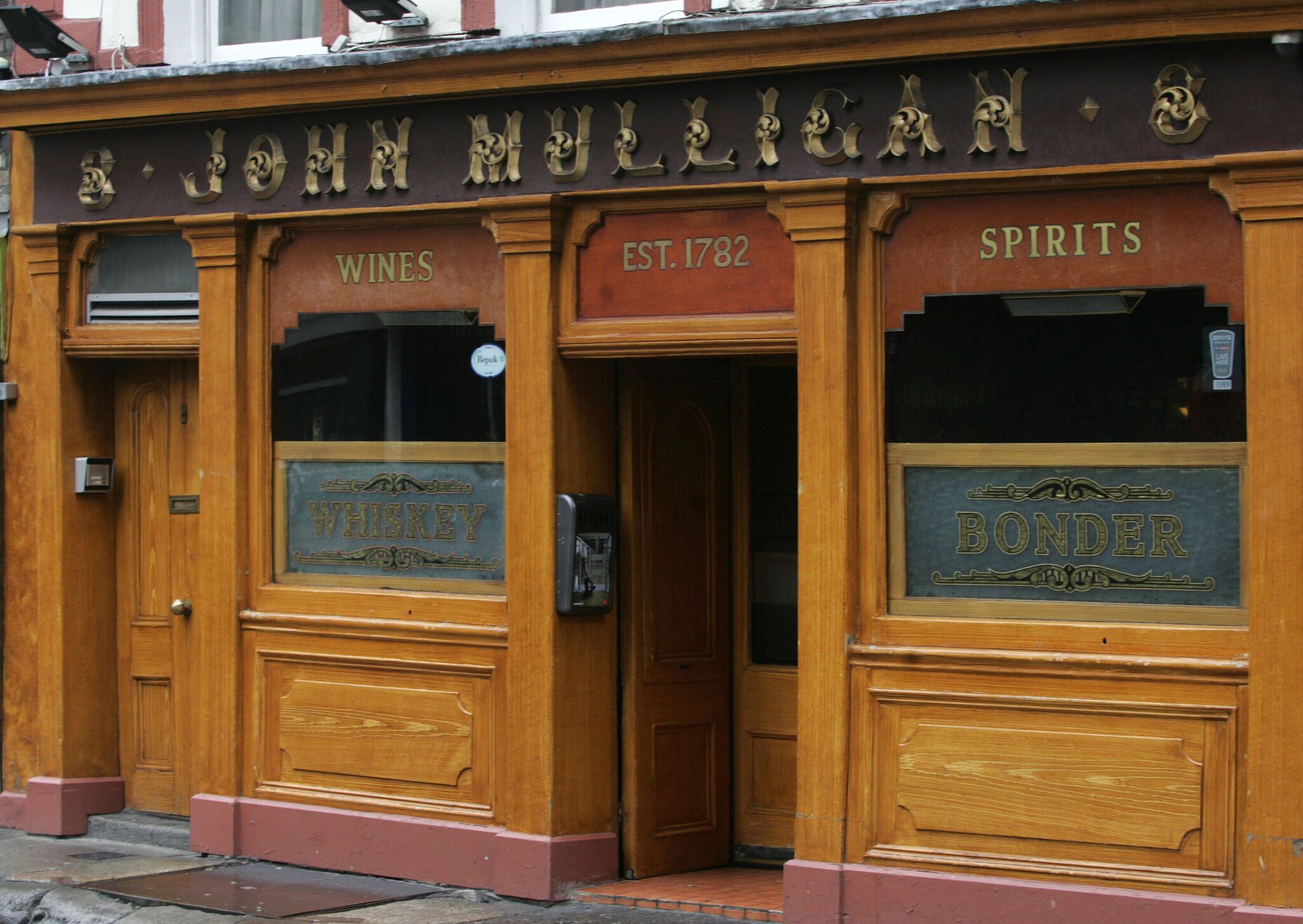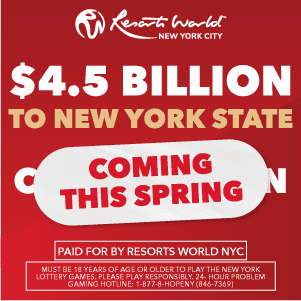The proprietor of O’Shaughnessy’s of Glin, Co. Limerick, aka the Ivy House, likely never said, “Have you no homes to go to?”
He must’ve known that when closing at 6 p.m., the customers, some of them at least, would find their way to other establishments
In “The Irish Pub,” a 75-minute documentary currently being streamed on NBC’s Peacock, his son says that he keeps the tradition of restrictive hours, and promised his father, whom he described as eccentric, that he would always keep the family name over the door.
The various pubs visited — in this gem of a film by Alex Fegan — are family businesses of at least two generations standing. And so, memories, traditions and things are preserved in ways that might not be the case in other places.
Thomas O’Shaughnessy takes down a set of artifacts, which, he says, come from a time of religious persecution in Ireland, if via New York. In the book of the same name, which one assumes inspired the film, it’s written, “Above the hearth is a traveling priest’s altar from penal times, complete with anointment water, crucifix, holy water spoon and embroidered cloth.”
The film itself is an artifact, frozen in time. It appeared first in 2013.“The Irish Pub,” published in 2008, has 201 splendid photos by James Fennell. It’s not a coffee-table book about pubs, though — the text is too substantial for that categorization. Indeed, there are 40 fine essays, one for each establishment, by past Echo contributor Turtle Bunbury, plus his introduction. (The book might be hard to acquire in 2025, though the essays are all available, and so much other fascinating material besides, via the prolific author Turtle’s website here, for a very reasonable annual subscription of €12).
The film followed much of the path trod by Bunbury and Fennell. About 15 or so of the 20 visited are in the book. The Dublin pubs are different: the doc bypasses the Long Hall and the Stag’s Head for the just as famous John Kavanagh in Glasnevin, John Mulligan of Poolbeg Street, and the Palace, close by on Fleet Street.
“The Irish Pub,” the book, isn’t tethered to the family theme, but when it’s part of the story, plenty of information is provided (including first names, absent from the doc until the credits). O’Shaughnessy’s proprietor has a day job, for instance, which puts the restrictive hours, different from his father’s, in some context. In 2025, it seems that O’Shaughnessy’s stays open late on Fridays and Saturdays, and closes early afternoons the other days.
We read of the family’s connection to Galway warrior Sir Dermot O’Shaughnessy, who was given his title by Henry VIII, and the branch in Limerick, the Knights of Glin. And we’re told, too, that Con Colbert, executed for his role in the 1916 Rising, was a family member. Thomas’s father, John, was an Irish army officer, who met his mother, Dody Meer, a Hungarian refugee, in London in the post-war era. Dody would bring her own country’s sensibility to the pub’s decor, Bunbury writes.
Simon Coyle of Four Roads, Co. Roscommon, tells us that his family business goes back to 1840; in a later time his great-grandfather extended it as a pub. Simon himself made the decision to come home from Dublin in 1992 to take it over from his parents, and he expresses his hopes for succession by the “fifth generation,” who are evident clambering onto bar to get into the frame. History is also honored in Coyle’s with references to hurling; Four Roads’ connection to the sport goes back centuries and it has been traditionally the most successful of the cluster of villages in the south of the county where it’s preeminent.
In the case of John B. Keane’s of Listowel, Co. Kerry, it’s a two-generation history. The playwright, columnist (including for this newspaper) and regular interviewee on national media, bought it with his wife after he returned from working in London in the 1950s. Keane’s profile made it arguably the most famous local in Ireland. When it was time to retire, he gave it to one of his children, Billy. Following his death in 2002, a journalist asked an “old boy,” to use Billy’s term, he saw wandering around in the street what he thought it was that made Keane so special. “John B. was the smartest man of them all,” the local man replied. “He took down what we said and then charged us to read it.”
It’s a three-generation story over a 100-plus years in Kingscourt, Co. Cavan, that ended after the film was completed — Paul Gartlan sold the business his grandfather had bought in 1911. The thatched structure was reopened in more recent times by a couple with roots in the area.
The film starts out with a quote on screen attributed to Yeats, “There are no strangers here, only friends you haven’t yet met.” The County Cavan barkeep is just as eloquent in suggesting that maybe that conviviality goes too far.
“You go into a pub abroad and they nearly ignore you,” Gartlan says. “You go into a pub in Ireland and they’ll be up on your arse to find out who you are: name, address, and creamery number, before you nearly get a drink.”
He has a sign behind him, and it can be seen in at least one other bar in the film, that reads, “I’m somewhat of a bullshitter myself, but occasionally I enjoy listening to an expert…Carry on!”
It goes with the trade, but one wonders if out and out BS in terms of history is such a good thing, especially when it’s unnecessary.
Congratulations to Sean’s Bar of Athlone for being named as best pub in the 2025 Irish Restaurant Awards. Its claim to be Ireland’s oldest pub dating to 900 AD, however, is nonsense, according to the archeologists and historians.
But I have to thank Margaret Johnson’s “Ireland Hopping” report on the awards (issue of May 28-June 3) for prompting me to look for the documentary, featured previously when it was on Netflix and cited as an influence, along with the book, by the New York’s version of the Long Hall, on East 34th Street.
Johnny Kennedy and his partners had a clear idea in mind when they set about weaving together different Irish traditions, both rural and urban, to make their pub, which is a block east of the Empire State Building.
Authenticity comes in many forms — the Ear Inn, for example, at 326 Spring St., lower down in Manhattan, has done well to preserve and document enough of the past to suggest that it has indeed been there since 1817 (Read about the remarkable story, beginning with construction in 1770, at its website here).
Even a substantial piece of an original structure being intact can certainly make for an interesting talking point. And if the business itself does not stretch back into the mists of time and that’s made clear, it’s no harm to state an age based on bricks and mortar. In that sense, the “oldest Irish pub” tag might go to the cave-like Druid’s Den, which, though it was founded in the center of Rome in 1982, has one wall that goes back 2,000 years — or so I was told when I visited many moons ago. Likewise, if at some point into the future a libertarian regime sold off Newgrange, Co. Meath, and a drinks establishment set up against its structure, it could have a claim to be the oldest at 5,000 years plus.
John Kavanagh looks like it’s part of the walled structure of Glasnevin Cemetery in Dublin; it’s not actually, but it has a history as a licensed premises that goes back to the time of the founding of that institution in the early 1830s. When I came of legal drinking age, a neighbor and friend who was a year older would call to say, “We’re going down to Kavanagh’s.” It was only much later that I heard people refer to it as “The Gravediggers.” Its proprietor in the film claims that the people of that trade were served alcohol in jam jars during World War I because of a glass shortage, and that was the origin of the phrase “Are you going for a jar?”
He also has the documentary’s sole ghost story, involving his hero, his stepdad, who passed the business on to him. But you’ll have to let him tell it himself.
A couple of miles to the south, and just over the river, a few feet from the corner of Westmoreland Street, you’ll find the Palace, the pub you should visit if you’re taking in just one on a quick visit to Dublin. Topping the list of reasons why is its decision to stick with Victorian esthetics when the fashion in the 1960s was to modernize; likewise, it didn’t join in with the frenetic remodeling of the Celtic Tiger years.
Owner Liam Aherne mentions the Palace’s associations with nationally prominent leaders from Michael Collins to Mary Robinson, but it’s the literary connections that are most notable. He refers to Kathleen and Stephen Behan as “lovely people”; their son Brendan, though, was a “bowsie” when drunk.
“He’d clear a pub,” he says. His father, he remembers, when he had the future world-famous playwright ejected, would inevitably be called a “Tipperary bollocks.”
Others get visual mentions: Behan’s frenemy Patrick Kavanagh, Irish Times editor R.M. “Bertie” Smyllie, and the civil servant Brian O’Nolan, aka the novelist Flann O’Brien. Smyllie, who held court for years in the back room, asked O’Nolan to write the Irish-language column “An Cruiskeen Lawn,” which he did, and later also in English, using his other pen name, Myles na gCopaleen.
Irish drinking history will get a new chapter soon, as a piece in the American Journal of Managed Care, posted by Mary Caffrey on March 17, makes clear: “Cancer Labels on Alcohol? Ireland, Where Pubs Still Rule, Will Have Them by Next Year.”
Of course, the Palace’s history of colorful literary figures is itself an in-built health warning, with few, if any of them surviving to collect the Old Age Pension. Smyllie died at 61 after a long period of ill health, his columnist Myles at 54, Kavanagh, 63 (the last two had cancer) and Behan, 41. Kathleen Behan had a long life, in contrast, dying at 94, while Stephen reached 75.
The proprietors themselves will likely tell you that hard work, preferably seven days a week, never killed anyone. And they all look in reasonable health, including those of a more advanced age.
The film catches up with each of them at a quiet time of the day, when they’re reflective and free to tell stories, as well as to offer advice about life. The first-rate cinematography helps; and the main soundtrack, which effects a mock eeriness, suggests that maybe some calamity is around the corner, but you feel they probably could deal with it. Both versions of “The Irish Pub” are highly recommended.








